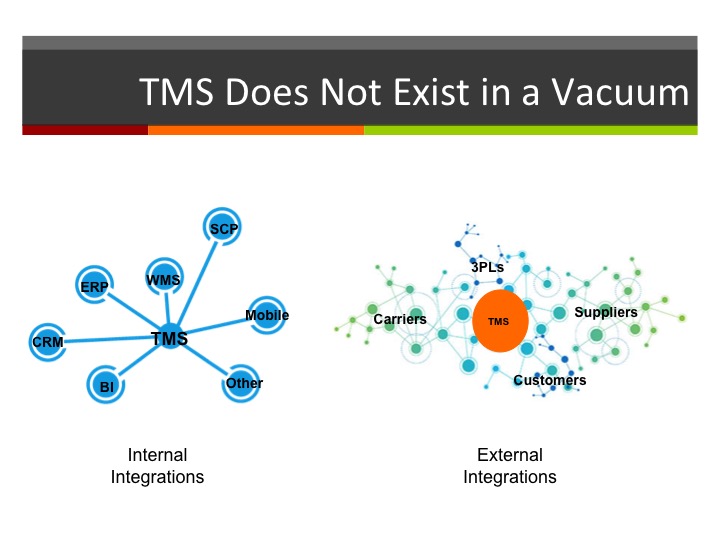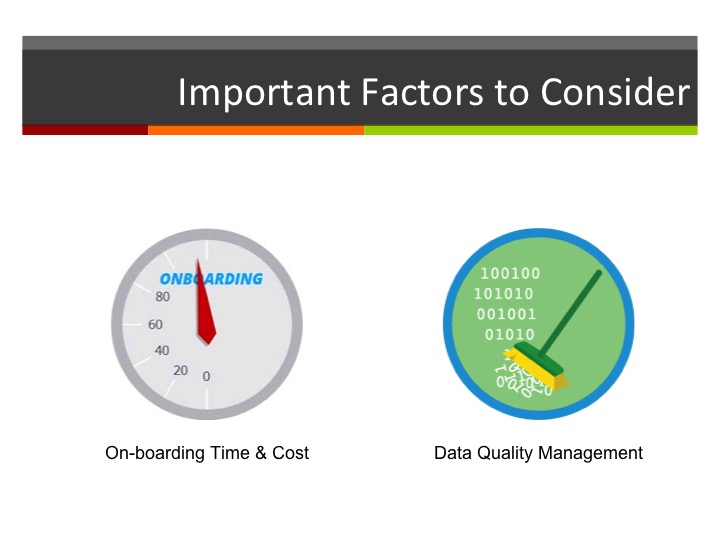I am at a swim meet to watch my son compete. It’s a beautiful pool, with plenty of seating for the parents to watch and cheer, and the temperature inside the building is not too hot or too cold. But there’s one thing missing: there’s no public WiFi (and no cellular connectivity either).
It doesn’t matter if you have the latest iPhone X or Samsung Galaxy smartphone; they’re both as useful as a small brick in here, which is actually a good thing because we should all be focused on our kids in the pool, not tapping and swiping on a screen.
The bottom line is that without network connectivity, our smartphones and other devices provide limited value these days. The same is true with transportation management systems (TMS).
In my experience, when companies start exploring investing in a TMS, they immediately rush to create a list of desired features and functions. While creating such a list is important, many companies often overlook one of the most critical, labor-intensive and time-consuming aspects of a traditional TMS implementation: network connectivity and system integration.
Simply put, a TMS doesn’t exist in a vacuum. It has to exchange data and information with a variety of internal systems, such as warehouse management and order management systems, and it has to communicate electronically with many external trading partners, including carriers, suppliers, and logistics service providers. And since these trading partner networks are continuously changing, establishing and maintaining connectivity with hundreds or even thousands of partners is an ongoing challenge — and cost factor.
The good news is that companies are starting to recognize the importance of TMS integration and connectivity. “Just how well and easily your TMS integrates could determine the overall success or failure of your project,” said JP Wiggins, Co-Founder & Vice President of Logistics at 3Gtms, in a recent webcast we participated in titled, Driving Growth and Flexibility with TMS Integration. “Therefore, integration is becoming a top priority for shippers and logistics service providers that are implementing a TMS.”
In my opening remarks, I highlighted two important metrics and factors that shippers need to consider as part of the integration process: Onboarding Time & Cost and Data Quality Management (DQM).
Wiggins addressed DQM in his comments too: “Your integration layer needs to have intelligence. It takes more than simply matching API formats; it’s about cleaning up bad data and filling in the blanks.” He highlighted several attributes of an intelligent integration layer, including the ability to look up logic from within the TMS to correct “dirty” data and the ability to manage the integration process by exception via automated alerts. “Because operational needs are constantly changing, the workflow will change too,” said Wiggins. “Therefore, integration automation must be flexible and configurable to allow for future changes.”
Wiggins and I, along with Mark Addesso from 3Gtms, addressed a lot of questions and topics during the webcast, including:
- Why has integration/connectivity been so challenging?
- Are the integration challenges the same for shippers and 3PLs?
- What are APIs and web services? Why are they getting so much attention today?
- When evaluating TMS options, what questions should shippers and logistics service providers ask related to integration? What capabilities or attributes should they look for in a solution?
I encourage you to watch the webcast for additional insights and advice on this topic, then post a question or comment and share your perspective!











